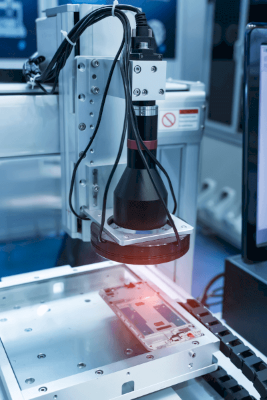What Is Machine Vision Lighting?

Machine Vision Lighting refers to lighting systems used in image processing to enhance the visibility and detail of the object being photographed and its environment.
Lighting is crucial in image processing, where images are captured and analyzed for various purposes. Proper lighting significantly influences image quality, facilitating the extraction of detailed information about the photographed object. Uniform illumination, for instance, simplifies the process of detail extraction.
This type of lighting also plays a key role in defect inspection and quality control by accentuating specific features or flaws, making them more visible.
However, selecting suitable lighting for both the subject and the environment is essential. Inappropriate lighting can negatively impact image quality and the accuracy of the analysis.
Applications of Machine Vision Lighting
Machine Vision Lighting finds its application in diverse areas, including:
1. Inspection
Used in industrial quality assurance, Machine Vision Lighting helps detect defects in product surfaces while manufacturing electronic devices and other products.
2. Automatic Recognition Systems
In robotics and automation, this lighting enhances the accuracy of systems like barcode and QR code readers, and face recognition technologies.
3. Medical Imaging
Crucial in medical imaging methods like X-rays, CT scans, and MRIs, proper lighting ensures enhanced image contrast and clearer visualization of lesions for accurate diagnosis.
Principles of Machine Vision Lighting
The primary goal of Machine Vision Lighting is to illuminate the subject uniformly, with appropriate color temperature and directionality, ensuring high-quality image capture.
Uniform illumination minimizes shadows and reflections, enhancing image contrast. The color temperature of the light source influences the image’s hue, while consistent lighting is crucial for accurate color reproduction. Directional lighting highlights the surface features of the subject, aiding in detailed analysis.
How to Select Machine Vision Lighting
Key considerations when selecting Machine Vision Lighting include:
1. Object Characteristics
The lighting choice should complement the object’s color, shape, and surface texture. Some applications may require specific wavelengths or specialized lighting.
2. Power Requirements
Consider the power consumption and potential need for cooling in high-power lighting systems.
3. Lighting Stability
Stable lighting sources are essential for consistent image quality.